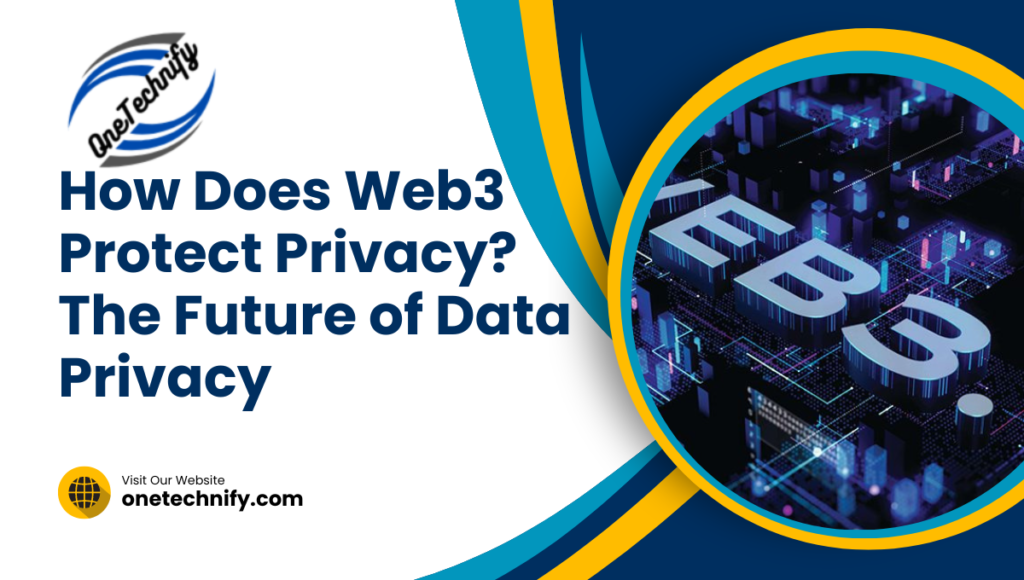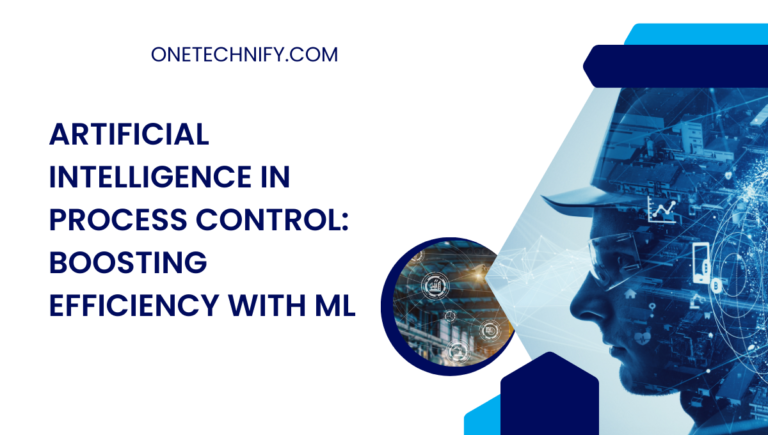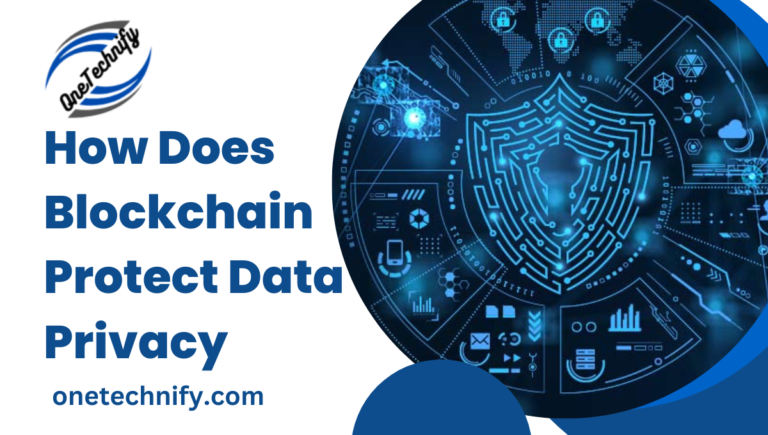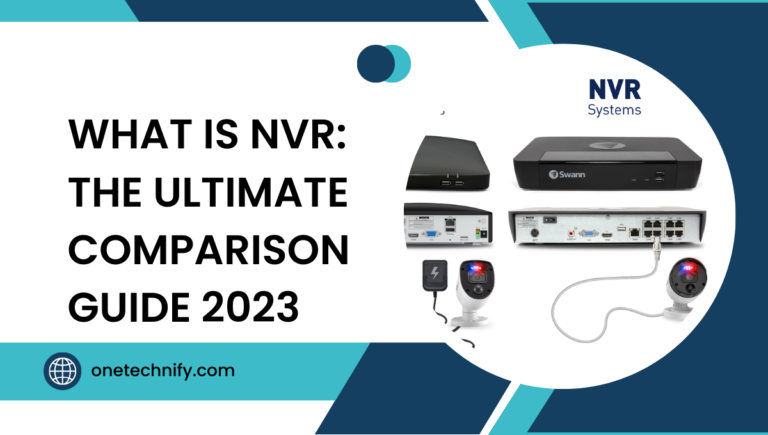How Does Web3 Protect Privacy? Web3 leverages blockchains to enhance security and address privacy concerns in the digital age. By utilizing decentralized technologies, Web3 ensures user data remains private and inaccessible to hackers or third parties. This shift from Web1 emphasizes the importance of safeguarding user information and complying with privacy regulations. With Web3, websites can provide a more secure online experience for internet users.
In the following paragraphs, we’ll delve deeper into how Web3 prioritizes data privacy in the digital world while revolutionizing the way internet users interact with websites and technology. Let’s explore how this innovative approach is reshaping our online landscape for the better by incorporating blockchains.
Enhancing Data Privacy and Security in Web3
Web3, with its advanced technologies and decentralized nature, offers robust solutions for protecting user privacy and enhancing data security in the digital world. By leveraging blockchains, encryption techniques, smart contracts, and decentralized networks, Web3 ensures that sensitive internet user information remains secure while enabling transparent transactions.
Encryption Techniques Safeguard User Data
One of the key ways Web3 protects privacy is through the implementation of encryption techniques in decentralized protocols and blockchain networks. When users interact with Web3 applications or platforms on websites, their data is encrypted using cryptographic algorithms. This means that sensitive information, such as personal details or transaction records, is transformed into unreadable formats that can only be decrypted by authorized parties. By encrypting data at rest and in transit, Web3 ensures that even if a breach occurs, the stolen information remains inaccessible to unauthorized individuals.
Smart Contracts: Secure Transactions with Preserved Privacy
Web3’s utilization of decentralized protocols and smart contracts plays a vital role in ensuring secure transactions while preserving data sovereignty. Smart contracts, built on blockchain technology, are self-executing agreements that automatically execute predefined actions once specific conditions are met. These contracts enable transparent interactions between parties without revealing their identities or confidential details publicly on centralized platforms like websites.
For instance, when conducting financial transactions on decentralized finance (DeFi) platforms powered by Web3 technologies, smart contracts act as intermediaries to facilitate secure transfers without exposing sensitive financial information to potential attackers. Users can transact with confidence knowing that their privacy and data protection are ensured through the use of pseudonyms rather than real names. This ensures data sovereignty and ownership for users on the internet.
Decentralized Networks: Reducing Centralized Data Breach Risks
Another significant advantage of Web3 lies in its decentralized networks, which reduce the risk of centralized data breaches commonly associated with traditional web applications. In a centralized system, all internet user data is kept in one place and controlled by one person. This concentration of data creates an attractive target for hackers aiming to compromise large amounts of sensitive information in a single breach. Web3 offers enhanced internet privacy and security, providing a solution to the concerns raised by big tech companies.
In contrast, Web3 applications and businesses operate on decentralized networks, enhancing internet privacy. Data is distributed across multiple nodes, making it challenging for big tech companies to access or manipulate the entire database. This distributed nature of Web3 significantly enhances data security and complies with privacy regulations by eliminating the single point of failure that centralized systems possess.
To summarize, Web3, the next generation of the internet, employs encryption techniques to protect user data, utilizes smart contracts for secure and private transactions, and leverages decentralized networks to mitigate centralized data breach risks. These advancements in privacy and security make Web3 an ideal choice for individuals and businesses seeking enhanced protection in their online interactions. Whether it’s conducting financial transactions or sharing personal information, Web3 ensures that privacy remains a top priority while enabling seamless connectivity in the digital world.
The Promising Impact of Web3 on Data Privacy
With the rise of Web3, data privacy protection has become crucial in the age of big tech companies. This revolutionary concept offers users more control over their personal information, reducing reliance on third-party platforms and ushering in a new era of internet privacy with the help of AI.
Users’ Control Over Personal Information
One of the key benefits that Web3 brings to the table is empowering users with greater control over their personal information in the context of privacy regulations and the internet. Web3 lets you own your data instead of big tech companies. It uses blockchain technology. This shift in power allows users to decide how their data is utilized and shared, mitigating the risks associated with unauthorized access or misuse.
Blockchain-Based Identity Systems
Web3 introduces blockchain-based identity systems that enable users to maintain data sovereignty and privacy while accessing online services securely on decentralized platforms. By leveraging cryptographic techniques such as zero-knowledge proofs, individuals can prove certain facts about themselves without revealing unnecessary details, complying with data privacy regulations. This ensures that sensitive information remains private while still allowing for seamless interactions within the digital realm.
Decentralized Governance Models
Another aspect that sets Web3 apart is its decentralized governance models, which are particularly relevant for individuals concerned about data privacy regulations imposed by big tech companies. Instead of relying on a single company or entity to oversee these regulations, Web3 distributes decision-making power across a network of participants. Through consensus mechanisms like proof-of-stake or proof-of-work, individuals collectively determine how data should be handled and protected, thus reducing the risk of monopolistic control over personal information. This democratic approach empowers users and aligns with the growing importance of AI in the tech industry.
The potential impact of Web3’s advancements in protecting privacy cannot be overstated. By shifting away from centralized systems, millions of people can regain control over their digital lives and safeguard their sensitive information from prying eyes.
However, it’s important to acknowledge that there are still challenges ahead for widespread adoption of Web3 technologies. The complexity involved in understanding blockchain technology may deter some individuals who lack technical knowledge. Regulatory frameworks and privacy laws need to evolve to keep up with the rapid pace of technological advancements.
Balancing Transparency and Privacy in the Web3 Era
In the era of Web3, where privacy is a growing concern, platforms are finding ways to balance transparency with individual privacy rights. Unlike traditional centralized systems, Web3 leverages decentralized networks and public ledgers to ensure transparency while providing users with control over their personal information. With the rise of AI, this balance is becoming even more important.
One of the key mechanisms that enables this balance is user consent, which is crucial for compliance with privacy regulations. In today’s digital landscape, individuals often feel their data is being collected without their knowledge or permission, which raises concerns about privacy regulations. Web3 platforms address this by implementing user consent mechanisms that allow individuals to choose what information they share within the network, ensuring compliance with privacy regulations. This puts users in control of their own data and ensures that only the desired information is made available on the public ledger, in accordance with privacy regulations.
To protect sensitive data while still enabling verification, protocols like zero-knowledge proofs play a crucial role in the Web3 ecosystem. Zero-knowledge proofs allow for verification without revealing any underlying sensitive data. They provide a way for individuals to prove ownership or authenticity without exposing private details. This technology offers a powerful tool for protecting privacy while maintaining trust within decentralized networks.
In contrast to traditional systems, Web3 operates on distributed networks where no single entity has complete control, thanks to the use of AI. This decentralization forms the foundation of Web3’s approach to privacy protection. By distributing control among multiple actors in the network, it becomes much harder for any one entity to exploit or misuse personal information.
The use of public ledgers further strengthens privacy protection in Web3. These transparent and tamper-proof ledgers ensure accountability and prevent unauthorized manipulation of data. While anyone can view transactions on these ledgers, access to specific details can be restricted based on user preferences and permissions.
Web3 also emphasizes choice. Users have more options than ever before when deciding how much information they want to disclose and who they want to share it with. The ability to customize privacy settings empowers individuals to participate in the Web3 ecosystem while maintaining their desired level of privacy.
In order to create a robust privacy-focused ecosystem, Web3 platforms must prioritize building trust among users. Transparency alone is not enough; users need assurance that their data is being handled responsibly and ethically. By implementing strong security measures, adhering to privacy best practices, and fostering a culture of transparency, Web3 platforms can establish themselves as trusted entities within the decentralized landscape. With the integration of AI, these platforms can further enhance privacy and security measures for user data.
Safeguarding Digital Identity in Web3
In the era of Web3, where privacy is a growing concern, safeguarding digital identity has become paramount. Fortunately, innovative AI technologies and solutions are emerging to address this issue. Self-sovereign identity solutions empower individuals with full control over their digital identities, ensuring greater privacy and security.
Decentralized identifiers (DIDs) are crucial for protecting digital identities in Web3 and complying with privacy regulations. DIDs empower users to manage their online personas securely across platforms, without relying on third-party intermediaries. This decentralized approach ensures that individuals can authenticate themselves using AI technology and maintain the privacy of their sensitive data.
Biometric authentication methods offer enhanced security for verifying digital identities in a privacy-preserving manner. Biometrics leverage unique physical or behavioral characteristics such as fingerprints, facial recognition, or voice patterns to validate an individual’s identity. By using biometric data as an authentication factor, Web3 platforms can ensure that only authorized users gain access while minimizing the risk of impersonation or fraudulent activities.
Implementing robust encryption protocols is another crucial aspect of protecting digital identities in Web3 and complying with privacy regulations. Encryption algorithms like asymmetric cryptography ensure that sensitive information remains confidential during transmission and storage, thus meeting the requirements of privacy regulations. By encrypting data at rest and in transit, unauthorized parties are unable to decipher it even if they manage to intercept it.
To further enhance privacy protection, zero-knowledge proofs (ZKPs) are gaining traction within the Web3 ecosystem. ZKPs allow individuals to prove the validity of certain statements without revealing any additional information beyond what is necessary. This cryptographic technique enables users to authenticate themselves or assert specific attributes without disclosing unnecessary personal details.
In addition to these technological advancements, user education plays a vital role in safeguarding digital identity in Web3 and complying with data privacy regulations. Individuals must be aware of potential risks and take proactive measures to protect their online personas, especially when it comes to AI. This includes practicing strong password hygiene, enabling two-factor authentication, and being cautious about sharing personal information online.
Decentralization: A Key to Data Privacy in Web3

Reducing Single Points of Failure and Enhancing Security
Decentralized technologies have revolutionized the way data is handled and protected in Web3. By distributing data across multiple nodes, decentralization eliminates the reliance on centralized servers or platforms that are vulnerable to attacks or breaches. This decentralized nature of Web3 offers a significant advantage.
In traditional centralized networks, a single point of failure can expose sensitive information to unauthorized individuals. However, with the rise of web3 technologies and decentralized protocols, such as blockchains, data is stored and verified across numerous nodes, ensuring web3 privacy and making it virtually impossible for hackers to compromise the entire network through a single attack. Even if one node is compromised, the distributed nature ensures that other nodes maintain a copy of the data, preventing any loss or manipulation. This enhanced security is particularly beneficial for Web3 businesses.
Minimizing Exposure of Personal Information during Transactions
One of the key aspects of Web3’s decentralized nature is its utilization of peer-to-peer networks, which comply with data privacy regulations. These networks eliminate intermediaries typically found in centralized systems, reducing the exposure of personal information during transactions.
In centralized platforms, users often have to entrust their personal data with third-party service providers who act as intermediaries between them and other users. This creates potential vulnerabilities as these intermediaries may mishandle or misuse personal information. In contrast, Web3’s peer-to-peer networks allow direct communication between users without involving any intermediaries.
Imagine buying a product online using traditional payment methods where you have to provide your credit card details to an intermediary platform. Your sensitive financial information could be at risk if this platform experiences a security breach. However, with decentralized technologies like blockchain networks, transactions can be conducted directly between the parties involved without exposing personal details such as credit card numbers. This enhances Web3 privacy and provides a safer environment for Web3 businesses.
Trust Without Relying on Centralized Authorities
Another advantage offered by decentralized systems in Web3 is the ability to establish trust without relying on centralized authorities. In traditional centralized systems, trust is often placed in a central authority that verifies and validates transactions. However, this centralized approach can be prone to corruption or manipulation.
Decentralized systems, powered by web3 technologies, employ consensus algorithms to achieve trust among participants in web3 businesses without the need for centralized authorities. These algorithms ensure that all nodes in the network agree on the validity of transactions, making it extremely difficult for any single entity to manipulate or control the system.
By removing the need for centralized authorities, Web3 empowers individuals with greater sovereignty over their data and privacy. Users have more control over their personal information as they are not required to rely on third-party entities to handle their data securely.
The Role of Data Storage in Ensuring Web3 Security
In the world of Web3, where data security and privacy are paramount, the role of data storage is crucial. Distributed storage systems play a vital role in protecting user information from loss and unauthorized access. By employing encryption techniques, these systems provide an additional layer of security to ensure data protection and sovereignty. Moreover, redundancy measures implemented in decentralized networks guarantee that data remains available even in the face of node failures.
Distributed Storage Systems: Preventing Data Loss and Unauthorized Access
Web3 leverages distributed storage systems to safeguard user data from various threats. Unlike traditional centralized storage models, where all information is stored on a single server or data center, Web3 utilizes decentralized networks. These networks distribute data across multiple nodes, making it highly resilient against attacks while minimizing the risk of data loss.
In this distributed model, each node stores only a portion of the overall dataset, ensuring the resilience and reliability of web3 technologies and web3 businesses. Even if one or more nodes become compromised or go offline, the remaining nodes continue to hold copies of the data, preserving its integrity and availability for web3 technologies and web3 businesses.
Encryption Techniques: Adding an Extra Layer of Security
To further enhance data security in Web3, encryption techniques are applied to stored information. Encryption involves encoding sensitive data using cryptographic algorithms so that it can only be accessed by authorized parties with the corresponding decryption keys.
One commonly used encryption method in the context of Web3 technologies is asymmetric encryption (also known as public-key cryptography). This technique employs two different but mathematically related keys: a public key for encrypting the data and a private key for decrypting it. By utilizing this approach, even if someone gains access to the encrypted data without authorization, they would still require the private key to decipher its contents.
Another widely adopted encryption technique in the web industry is symmetric encryption. In this web method, a single key is used for both encrypting and decrypting web information. While symmetric encryption offers faster processing speeds on the web, it necessitates secure key distribution between the parties involved in the web process.
Redundancy Measures: Ensuring Data Availability
Decentralized networks in Web3 implement redundancy measures to guarantee data availability. Redundancy involves creating multiple copies of data and distributing them across different nodes within the network. This approach ensures that even if certain nodes fail or are compromised, other nodes can still provide access to the required information.
Web redundancy measures can be implemented using various web strategies, such as
- Replication: Creating exact copies of web data and storing them on different web nodes.
- Erasure coding is a technique used in web development that involves breaking down data into smaller fragments and distributing them across multiple nodes. This ensures that even if some fragments are lost or inaccessible, the original data can still be reconstructed from the remaining fragments.
By employing redundancy measures, Web3 mitigates security concerns regarding potential data unavailability due to node failures or attacks.

How Does Web3 Protect Privacy? The Future of Data Privacy in Web3
In conclusion, Web3 holds tremendous potential for enhancing data privacy and security. With its decentralized nature and innovative technologies, Web3 offers a promising impact on protecting user privacy in the digital realm. By balancing transparency and privacy, Web3 creates a framework that safeguards digital identity while empowering individuals to maintain control over their personal information.
One of the key advantages of Web3 is its ability to enhance data privacy and security. Through decentralization and encryption protocols, Web3 ensures that sensitive information remains secure from unauthorized access or manipulation. This decentralized approach eliminates single points of failure, making it more difficult for malicious actors to compromise user data.
Web3 also enables users to strike a balance between transparency and privacy. While blockchain technology provides transparency by recording all transactions on a public ledger, individuals have the power to control what information they share with others. This level of control empowers users to maintain their privacy while still participating in online activities.
Safeguarding digital identity is another crucial aspect of Web3’s approach to data privacy. By leveraging cryptographic techniques, individuals can create unique digital identities that are pseudonymous rather than tied directly to their real-world identities. This protects users from potential identity theft or misuse of personal information.
Furthermore, decentralization plays a pivotal role in ensuring data privacy within the Web3 ecosystem. By distributing data across multiple nodes instead of relying on centralized servers, Web3 reduces the risk of large-scale data breaches or unauthorized access. This distributed nature makes it significantly more challenging for hackers to gain control over sensitive information.
The storage infrastructure within Web3 is designed with security in mind. Through the use of encryption algorithms and distributed file systems, data stored on Web3 platforms remains encrypted and fragmented across various nodes. This adds an extra layer of protection against unauthorized access and enhances overall system resilience.
To fully embrace the future of data privacy in Web3, it is essential for individuals and organizations to stay informed and adopt best practices. Regularly updating software, utilizing secure wallets, and being cautious of phishing attempts are just a few examples of proactive measures that can be taken to protect privacy in the Web3 era.
In conclusion, Web3 presents an exciting opportunity to revolutionize data privacy. By harnessing the power of decentralization, encryption, and pseudonymity, Web3 offers a more secure and private online experience. It is up to each individual to embrace these technologies and take control of their digital identities.
Frequently Asked Questions
How does Web3 protect my personal information?
Web3 protects personal information through decentralization, encryption protocols, and pseudonymity. By distributing data across multiple nodes instead of relying on centralized servers, it reduces the risk of unauthorized access or data breaches. Cryptographic techniques allow users to create unique digital identities that are pseudonymous rather than directly linked to real-world identities.
Is Web3 completely private?
While Web3 enhances privacy compared to traditional web technologies, it is not completely private. The blockchain ledger used in Web3 is transparent by design but allows individuals to control what information they share publicly. It strikes a balance between transparency and privacy while giving users more control over their personal data.
Can I trust Web3 platforms with my sensitive information?
Web3 platforms prioritize security and employ various measures such as encryption algorithms and distributed file systems to protect sensitive information. However, it is still important for users to exercise caution when sharing sensitive data online. Adopting best practices like using secure wallets and regularly updating software can further enhance security.
What steps can I take to ensure my privacy in the Web3 era?
To ensure your privacy in the Web3 era, you can take several steps:
- Be cautious about sharing personal information online.
- Use strong passwords or consider using password managers.
- Keep your web software up-to-date to benefit from the latest web security enhancements.
- Utilize secure wallets for managing your digital assets.
- Educate yourself about potential privacy risks and adopt best practices.
How does Web3 prevent unauthorized access to my data?
Web3 prevents unauthorized access through its decentralized nature. By distributing data across multiple nodes, it eliminates single points of failure, making it more difficult for malicious actors to gain control over sensitive information. Encryption protocols ensure that even if unauthorized access occurs, the data remains encrypted and unusable.






